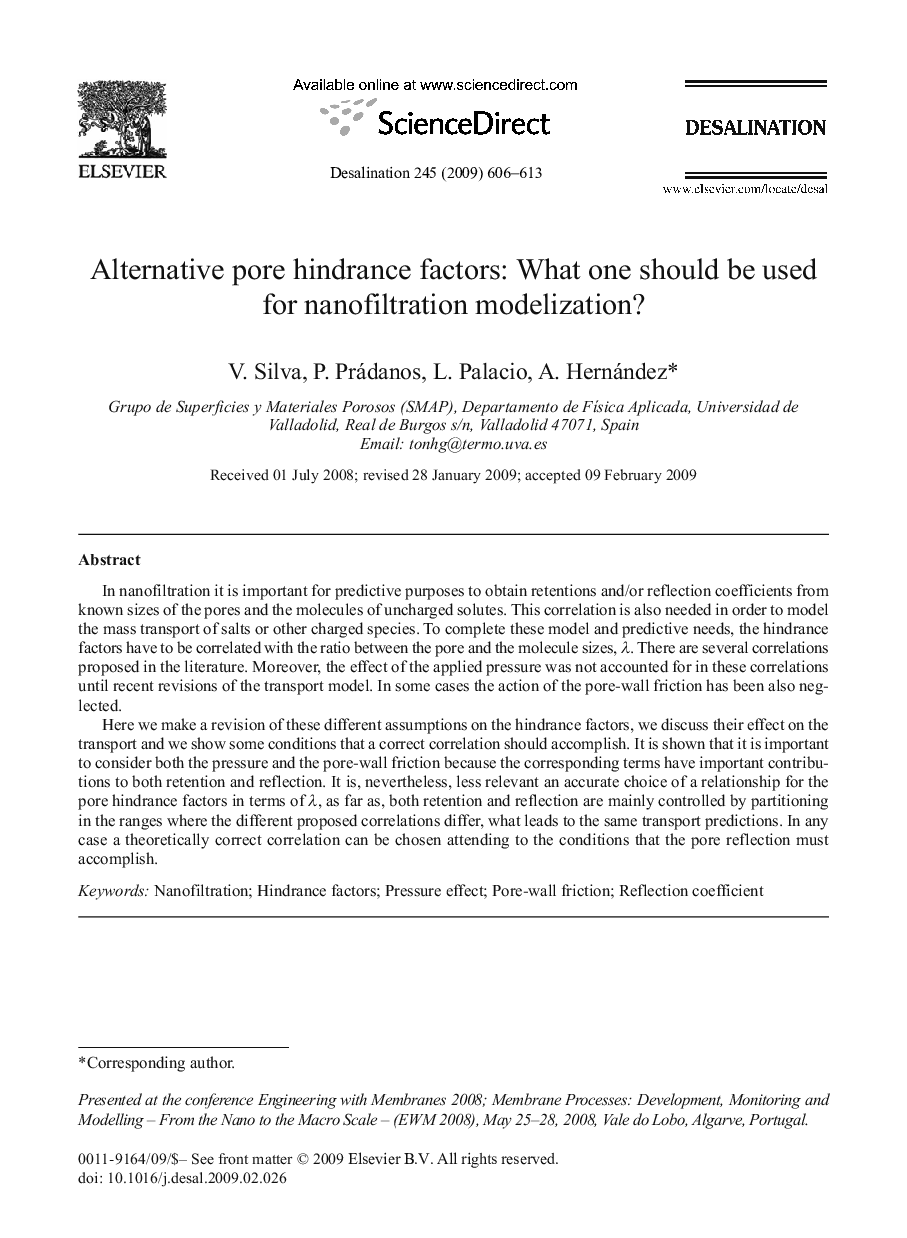| کد مقاله | کد نشریه | سال انتشار | مقاله انگلیسی | نسخه تمام متن |
|---|---|---|---|---|
| 626312 | 1455445 | 2009 | 8 صفحه PDF | دانلود رایگان |

In nanofiltration it is important for predictive purposes to obtain retentions and/or reflection coefficients from known sizes of the pores and the molecules of uncharged solutes. This correlation is also needed in order to model the mass transport of salts or other charged species. To complete these model and predictive needs, the hindrance factors have to be correlated with the ratio between the pore and the molecule sizes, λ. There are several correlations proposed in the literature. Moreover, the effect of the applied pressure was not accounted for in these correlations until recent revisions of the transport model. In some cases the action of the pore-wall friction has been also neglected.Here we make a revision of these different assumptions on the hindrance factors, we discuss their effect on the transport and we show some conditions that a correct correlation should accomplish. It is shown that it is important to consider both the pressure and the pore-wall friction because the corresponding terms have important contributions to both retention and reflection. It is, nevertheless, less relevant an accurate choice of a relationship for the pore hindrance factors in terms of λ, as far as, both retention and reflection are mainly controlled by partitioning in the ranges where the different proposed correlations differ, what leads to the same transport predictions. In any case a theoretically correct correlation can be chosen attending to the conditions that the pore reflection must accomplish.
Journal: Desalination - Volume 245, Issues 1–3, 15 September 2009, Pages 606-613